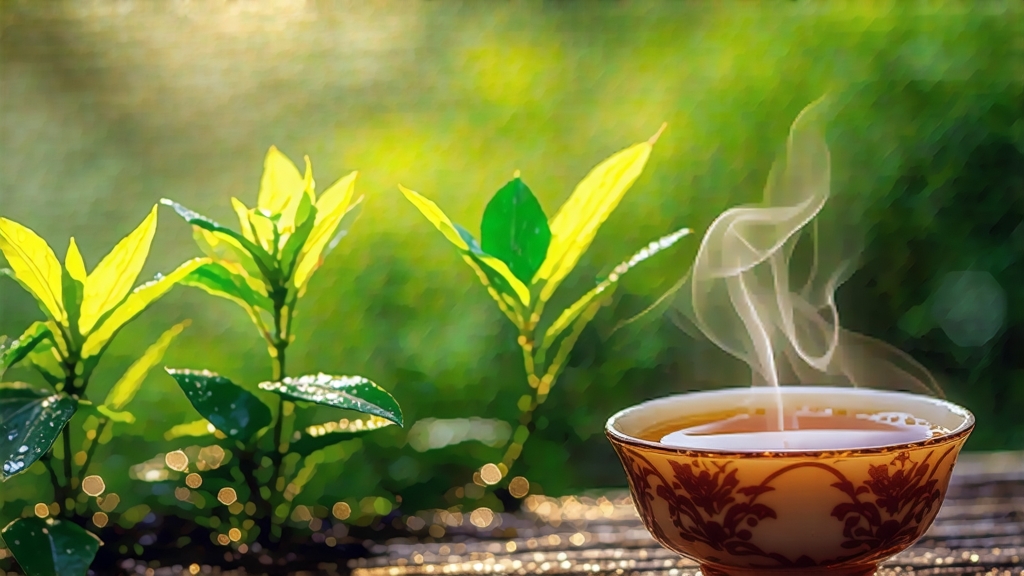
Tucked into the cloud belt of Taiwan’s Chiayi County, Alishan High-Mountain Oolong (阿里山高山烏龍) is the island’s most fragrant ambassador to the world of fine tea. Unlike the heavily roasted Wuyi cliff teas or the lightly baked Anxi Tieguanyin, Alishan Oolong occupies a luminous middle realm: greener than classical rock oolongs, yet more oxidized than modern “jade” Tieguanyin, it captures the crisp altitude of 1,200–1,500 m in every curved leaf. International drinkers often meet it first through bubble-tea menus, but in the mountains it is still hand-crafted in tiny plots where farmers rise before 4 a.m. to beat the sunrise and the mist.
History and Terroir
Tea bushes reached Taiwan’s central ranges in the mid-eighteenth century, yet Alishan remained a forest reserve until the Japanese colonial government opened logging railways in 1912. Seedlings of Qingxin Oolong (青心烏龍, “green-heart oolong”) were transplanted from Fujian’s Wuyi in 1899, but only after the completion of the Alishan Forest Railway in 1914 did tea become a cash crop. The post-war 1950s saw Kuomintang veterans swap camphor trees for tea gardens, and by 1979 the first high-altitude, cold-weather harvests were air-flown to Taipei auction halls, commanding prices higher than Dongding. The defining terroir is a perpetual spring: mean year-round temperature 18 °C, relative humidity 88 %, and a nightly cloud curtain that blocks infrared radiation, forcing the plant to hoard amino acids and floral volatiles. Basalt-and-slate soils, rich in iron yet fast-draining, stress the roots just enough to concentrate flavor.
Cultivars and Garden Styles
Although Qingxin Oolong remains the pedigree cultivar, farmers now interplant Jinxuan (金萱, “milk oolong”) for its natural lactone aroma and Sijichun (四季春, “four-season spring”) for yield. Gardens are terraced only to the minimum extent required by slope; most plots follow contour lines, leaving native bamboo and cedar as windbreaks. Shade from the forest lengthens the leaf’s growing cycle by 20–30 days compared with lowland teas, thickening cell walls and creating the signature “high-mountain resistance” that allows repeated infusions without collapse.
Plucking Standard
The ideal pluck is “one bud, three leaves” at 40 % stem red—later than green tea, earlier than black. Experienced pickers pinch with the nail, not the fingertip, to avoid bruising and premature oxidation. Leaves are collected in shallow bamboo baskets lined with gauze; depth never exceeds 8 cm to prevent compression heating. The trek from garden to factory must finish within two hours, before the mountain sun raises leaf temperature above 25 °C.
Withering: Sun, Wind, and Bamboo
Alishan’s high ultraviolet index means outdoor withering lasts only 15–25 minutes, just long enough for the edges to lose stiffness. Trays are then moved indoors onto bamboo slat racks where mountain wind continues dehydration for another 90 minutes. The goal is 10 % moisture loss—enough to make the leaf supple for rolling without triggering grassy notes.
Shaking and Oxidation: The Aroma Waltz
Every half-hour the leaves are tossed in a circular motion called yaoqing (搖青), literally “shaking the green.” Each toss bruises the cuticle, releasing catechins and enzymes that mingle in the air. In Alishan’s cool climate this dance can last 8–10 cycles across six hours, reaching only 25–30 % oxidation—lighter than Dongding’s 40 % but deeper than modern Anxi’s 15 %. When the leaf emits a ripe-peach note and the outer rim turns copper-red while the center stays jade, oxidation is arrested.
Kill-Green: A Lightning Strike
A drum roaster pre-heated to 280 °C receives the leaves for 4–5 minutes. The goal is not full dehydration but enzyme deactivation; the leaf must remain 50 % wet so it can later be ball-rolled. Masters listen for the tell-tale “popcorn crackle” that signals the cell walls have set.
Rolling and Balling: The Jade Pearl
While still above 60 °C the leaves are wrapped in cotton cloth and compressed into a ball, then rolled under mechanical